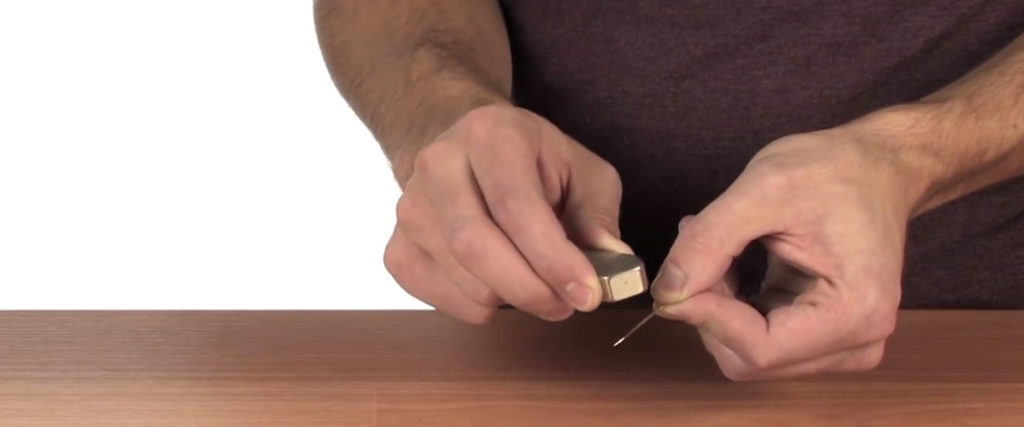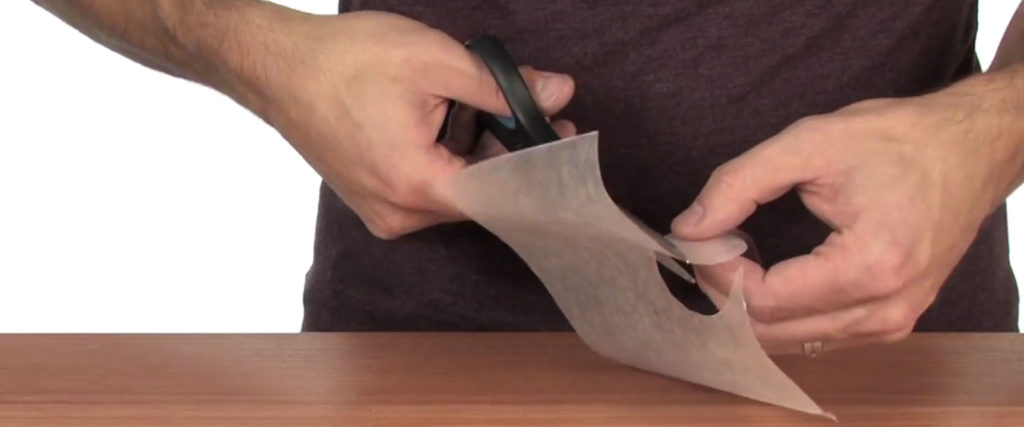Magnetic Money
It’s true, money is magnetic! You’ll need to get your hands on a super strong neodymium magnet to uncover an amazing secret.

There is one tool that is sure to give you guidance if you get lost, a compass. But what could you do if you forgot to pack this useful tool in your survival kit? Easy! Float a needle on top of a standing pool of water. Well, there’s a bit more to creating a compass out of a needle and some water, but you can do it right at home with just a few tools.

Begin by magnetizing your sewing needle – rub one end of the needle with the “north” pole of your magnet 50 times. Using a red Sharpie to color this end of the needle.

Repeat step one, rubbing the “south” pole of your magnet against the opposite (not-yet magnetized) end of the sewing needle.

Using a pair of scissors, cut a circle about 1″ (2.5 cm) in diameter out of the wax paper.

Carefully thread the needle through the wax paper circle, as you would a needle into cloth. Don’t run the needle all the way through, but leave the needle half-way through the wax paper with the needle lying flat on the surface of the wax paper.

Float the wax paper on the surface of the water so that the ends of the needle are on top of the wax paper.

While the needle and paper float on the surface of the water, watch what happens. The needle will rotate on the surface of the water. The red end of the needle, the end you magnetized with the “north” pole of the magnet, will point north!
Now that’s cool. You’ve made a simple compass! The key to making your compass work is rubbing the magnetic poles of your magnet on opposite ends of the needle. When you rub the needle with your magnet, you leave residual (left-behind) magnetic material. This residual material magnetizes the needle itself.
For the compass to work, you also need to remove as much friction as possible from your needles and wax paper apparatus. By floating this device on the water’s surface, you removed a lot of friction (as opposed to setting it on a countertop or table). Once floating on the water, the Earth’s magnetic field (caused by the magnetic materials nickel and iron in the Earth’s core) pull at the opposite poles of the needle.